The vast landscapes of Australia are simply breathtaking, enhanced by the many extraordinary creatures that call the country home, including the incredible emu (Dromaius novaehollandiae). Standing tall and regal, these large animals proudly represent Australia as the country’s unofficial bird. Revered in native mythology and taking their place on the nation’s coat of arms, these formidable creatures can appear rather intimidating. However, emus are also amazing, caring parents, and each year they raise their own fluffy bundles of joy. Let’s take a look at 10 adorable pictures and 10 fascinating facts about baby emus!
1. Baby Emus Grow Up to Become Some of the Largest Birds in the World
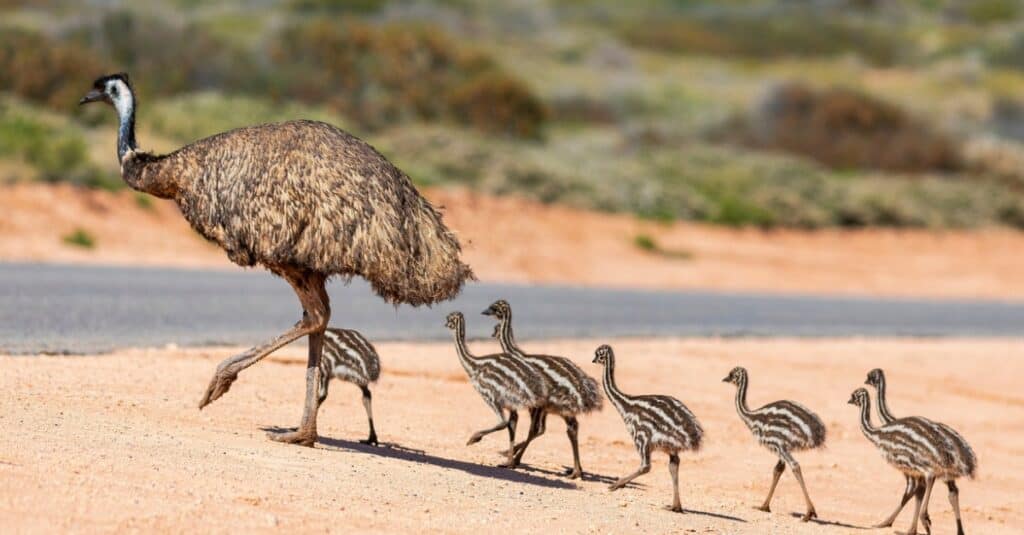
Emu babies follow their fathers to learn everything they need to know to live and survive.
©iStock.com/JensenChua
Male and female emus come together during Australia’s summer months (December and January), pairing up to defend their chosen territory. Mating typically occurs from April to June, depending on the climate. Bright-eyed baby emus hatch after incubating for around 56 days, emerging from their eggs when they are just 5 inches tall. However, by the time they are adults, baby emus will reach an incredible height of 5 to 6.25 feet tall! In fact, the emu is the second tallest bird in the entire world, second only to the ostrich.
2. Baby Emus Are Born with Cute Camouflage

Down feathers are softer and finer than adult feathers.
©Hazel Plater/Shutterstock.com
Baby emus are simply adorable, covered with soft, fluffy down and distinct patterns. There are tiny dark spots sprinkled all over their heads and necks, and they have long dark brown and cream-colored stripes running down their little bodies. These unique colors and patterns help to protect baby emus, serving as a built-in camouflage that helps them blend in with their surroundings. When they are around three months old, the chicks develop dark brown or black feathers, which eventually are replaced with a dusty and pale gray-brown color.
3. Baby Emus Grow Quickly
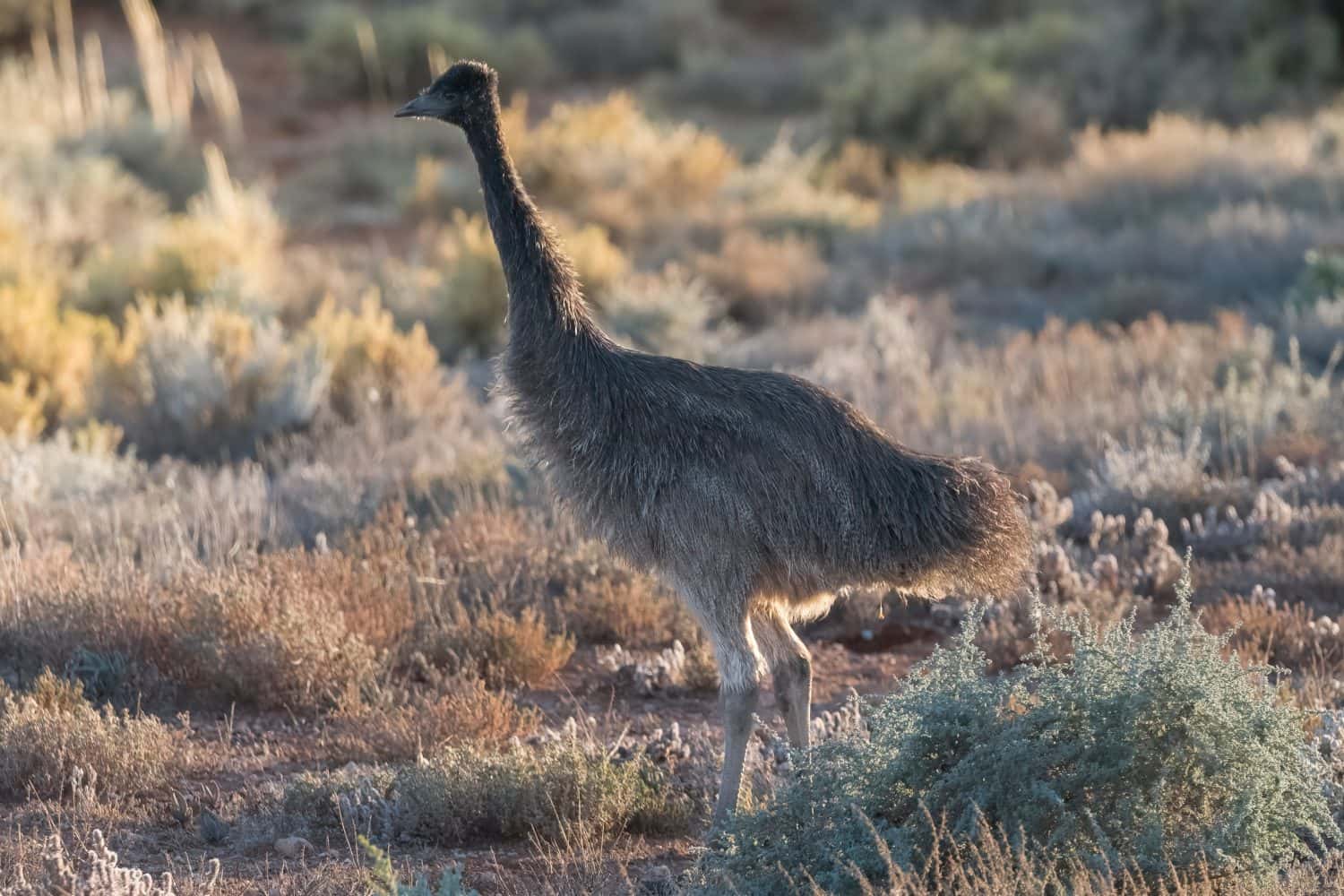
Juvenile emus lose their striped patterns as they grow and mature.
©Warren Lloyd/Shutterstock.com
Baby emus are precocial animals, which means that their bodies are mature and mobile when they hatch. Because of this, they do not require much help from their parents, and they can even feed themselves. While they can leave the nest just a few days after hatching, however, baby emus stay with their parents for several more months. They grow quickly, and within three months they are considered juveniles. When baby emus are one to one and a half years old, they are considered adults.
4. Baby Emu Eggs Are Big, Beautiful, and Green
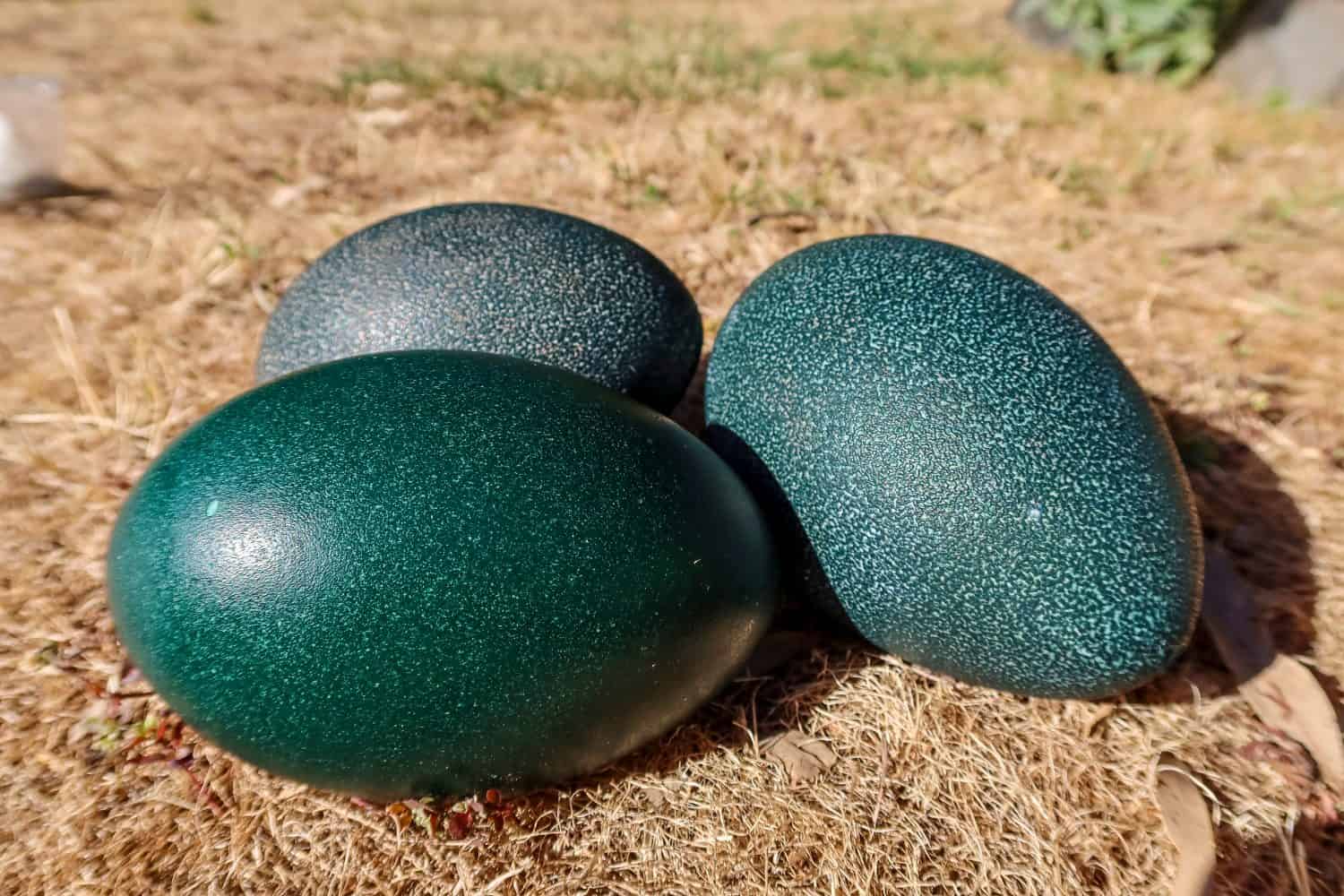
Emu eggs weigh around one pound.
©Marina Kryuchina/Shutterstock.com
Emus are extraordinarily large birds, and so it makes sense that they lay impressively large eggs. In fact, baby emu eggs are around 5 inches long and 3.5 inches wide and weigh 1 to 1.5 pounds! About 50% of each egg is made up of yolk, which is more than what you’d expect for an egg of this size. This is because the emu egg takes a long time to hatch, so the developing chick needs extra resources before breaking out of its shell.
Initially, the surface of the egg is granulated and pale green. However, during the incubation period, which is when a parent sits on the egg to keep it warm, the color changes to a stunning, dark emerald green. If the egg never hatches, it eventually turns white due to the bleaching effects of the sun.
5. The First Official Identical Twin Birds Were a Pair of Baby Emus
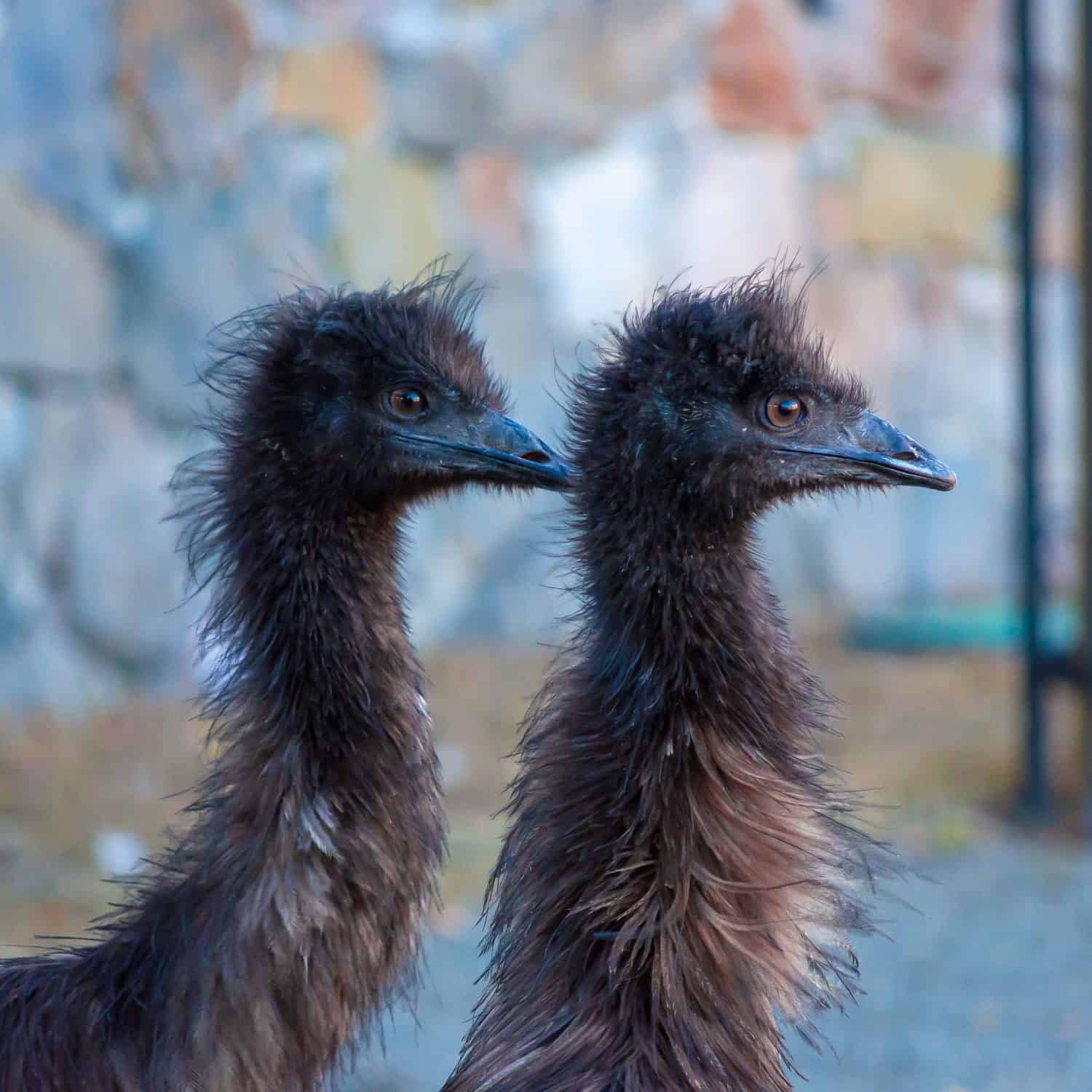
Emus have loose feathers with a hairlike appearance.
©Borja Robles/Shutterstock.com
Identical twins are not something you’ll see in the bird world — except in emus! Several years ago, scientists discovered an unusually large emu egg. When it hatched, it contained not just one, but two baby emus! When the emu twins finally emerged from their shared egg, they were incredibly tiny. Interestingly, the combined weight of both chicks nearly matched that of a single chick from a regular-sized egg.
To confirm that these chicks were truly identical twins, the scientists conducted a DNA analysis. They discovered the bands of both of the chicks’ DNA samples were the same — an exact match! The chances of this happening by pure coincidence were incredibly slim, yet baby emus seem to always be full of surprises.
6. Baby Emus Have Great Dads
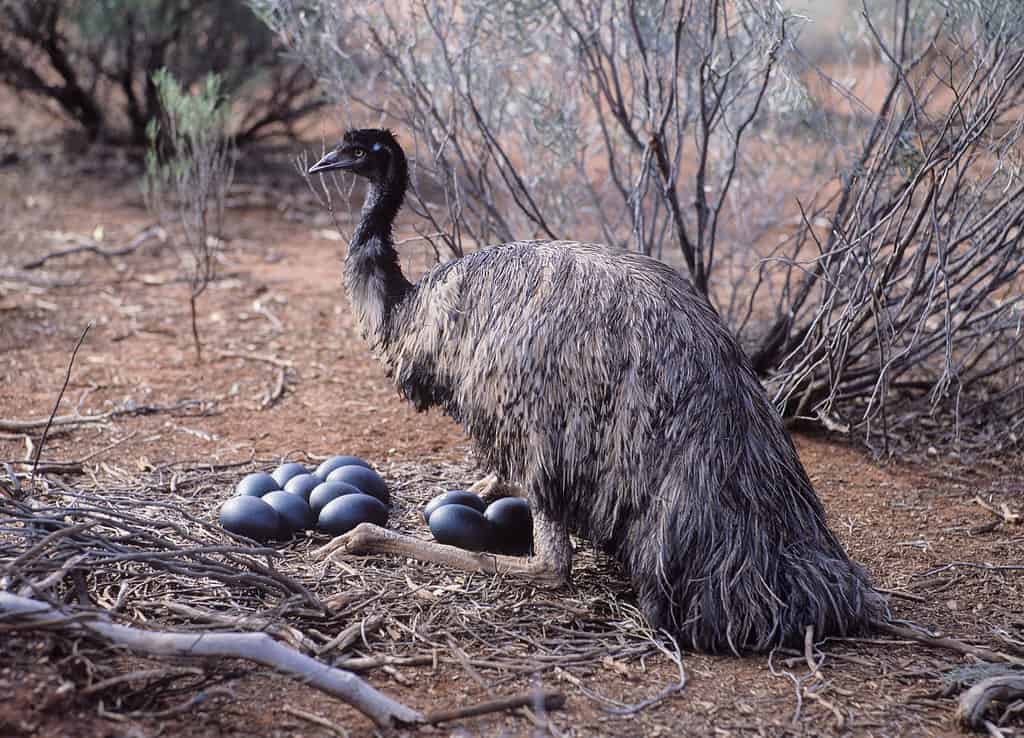
Sometimes female emus help guard the nest, but males are primarily responsible for the babies.
©JohnCarnemolla/ via Getty Images
When it comes to raising baby emus, their fathers take center stage. In fact, it is the male emu — not the female — that builds the nest and incubates the eggs! Male emus diligently sit upon 15 to 25 eggs in their nest and don’t leave them until they have completely hatched. They don’t take any time away to eat, drink, or even defecate!
Once the baby emus hatch, their fathers become very protective and will even be aggressive to their mothers, driving away female emus and attacking anything that gets close to their nest. Male emus stay with their babies for five to seven months, protecting and teaching them how to live and survive. Sometimes they even take on orphaned or lost chicks from other broods!
7. Baby Emus Are Fast Runners and Strong Swimmers
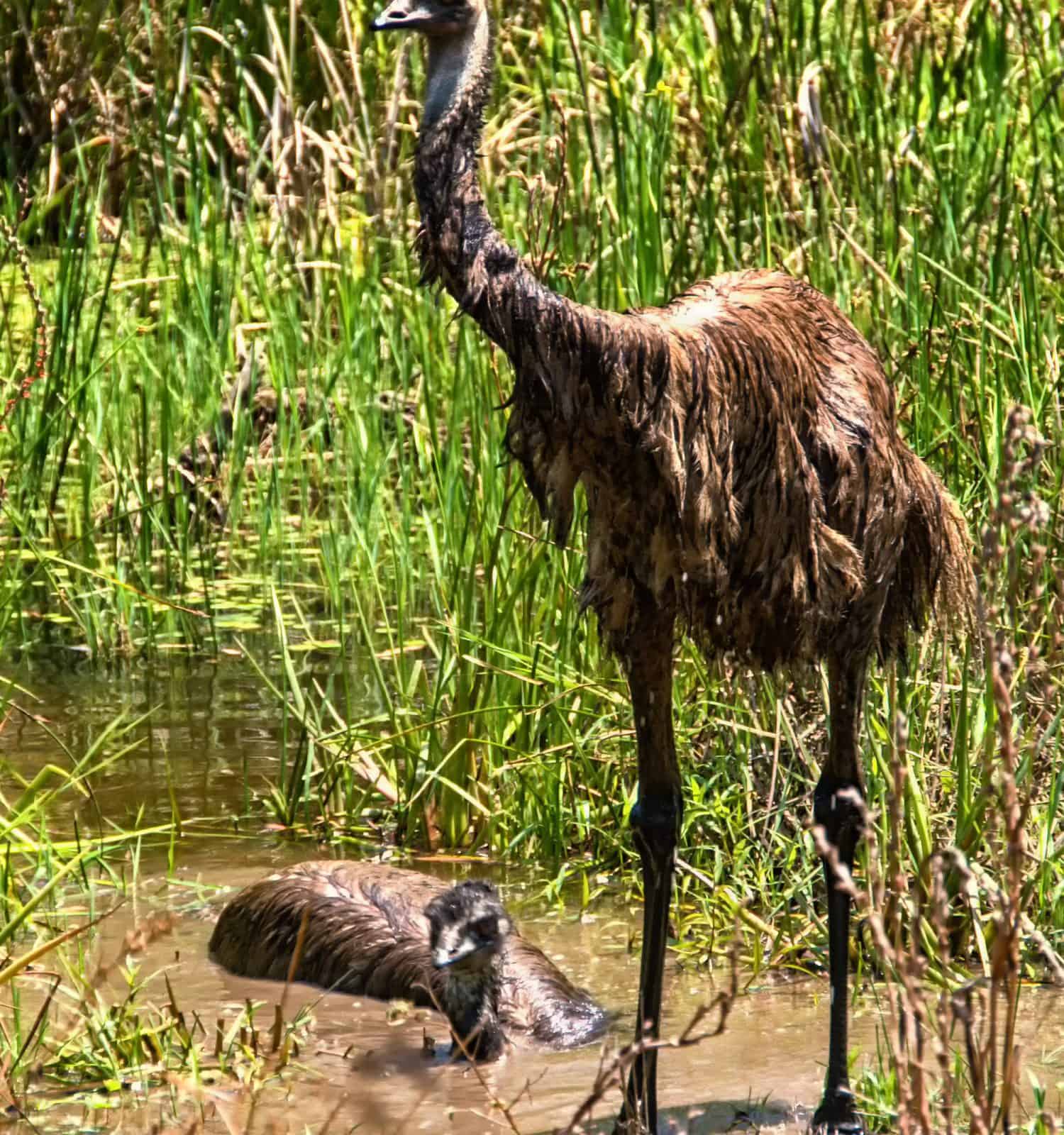
Some emus enjoy taking a dip in a lake or pond when the weather gets too hot.
©Atosan/Shutterstock.com
Baby emus are still born with small, vestigial wings — which just means that while they have wings, they are small and not used for flying. However, these flightless birds don’t need to fly because they’ve got many other pretty impressive skills. For example, emus are excellent swimmers.
In addition, emus are incredible runners and can cover long distances in no time. They flap their small wings when they run, likely to help them stay balanced while zooming around. And while they may look a bit goofy, adult emus can actually run up to 30 miles an hour! Unlike other bird species, emus also have special leg muscles that allow them to run fast and jump much higher than you might expect. In fact, an adult emu can jump 7 feet straight up off the ground!
8. Although Uncommon, Some People Raise Baby Emus as Pets
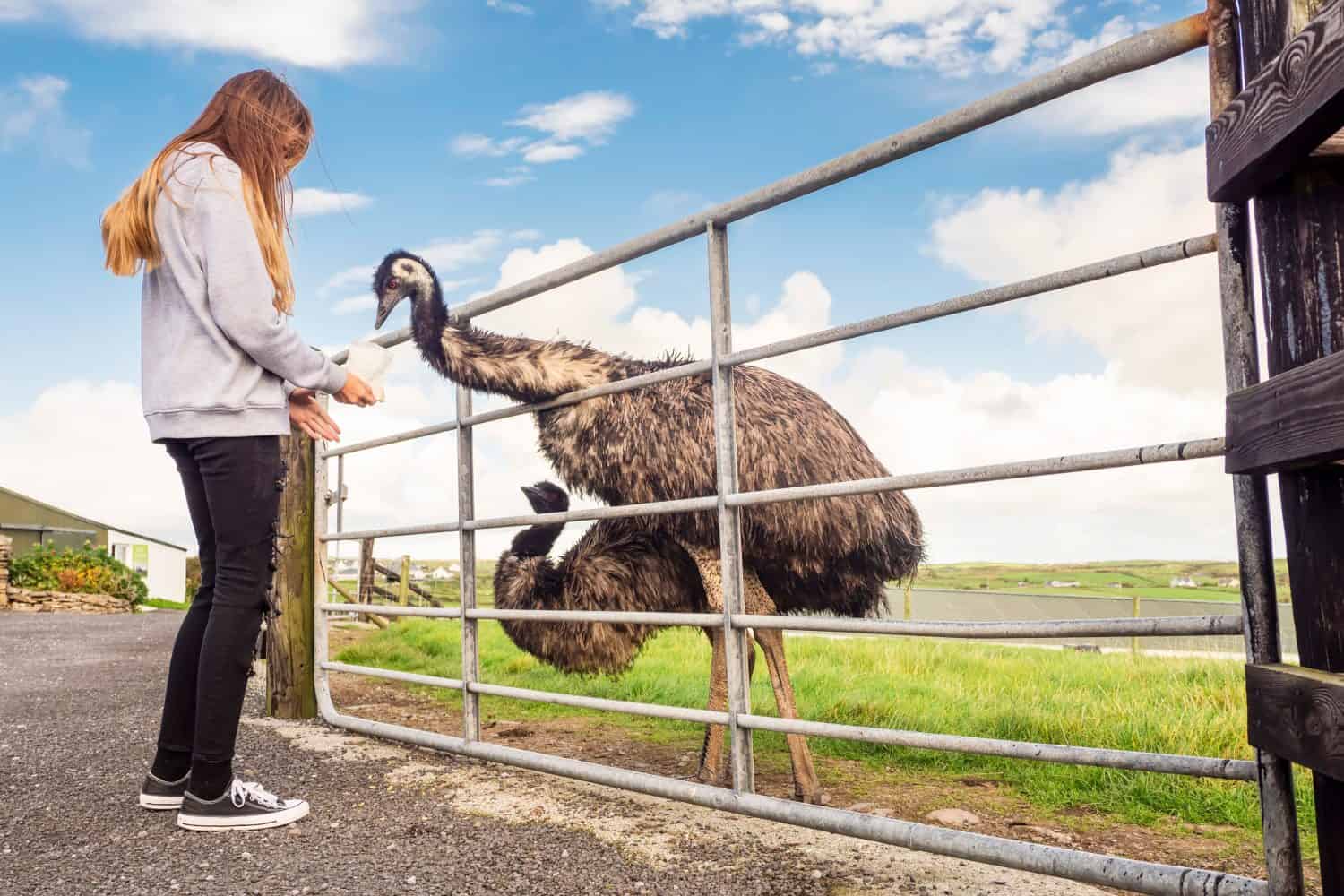
Pet emus do best when you raise them as chicks. This helps them get used to you and build trust.
©mark gusev/Shutterstock.com
Can you imagine raising a baby emu as a pet? It may sound surprising, but emus can actually make wonderful companions. Emus can be surprisingly affectionate and gentle birds. They have this amazing way of connecting with their human friends and love attention. Of course, raising a baby emu still takes a great deal of time, patience, and lots of resources.
Before you rush out to get your very first emu, there are a few things you need to know. As kind and loving as they can be, emus can also have a bit of a temper. If they feel provoked or threatened, they can get moody and even aggressive. Emus are extraordinary birds with powerful legs and seriously long claws — they grow up to 6 inches long and can do quite a lot of damage. Fortunately, emus are not particularly aggressive unless they feel provoked or if they’re protecting their chicks, but it’s important to respect their size and built-in weaponry.
9. Wild Baby Emus Only Live in Australia
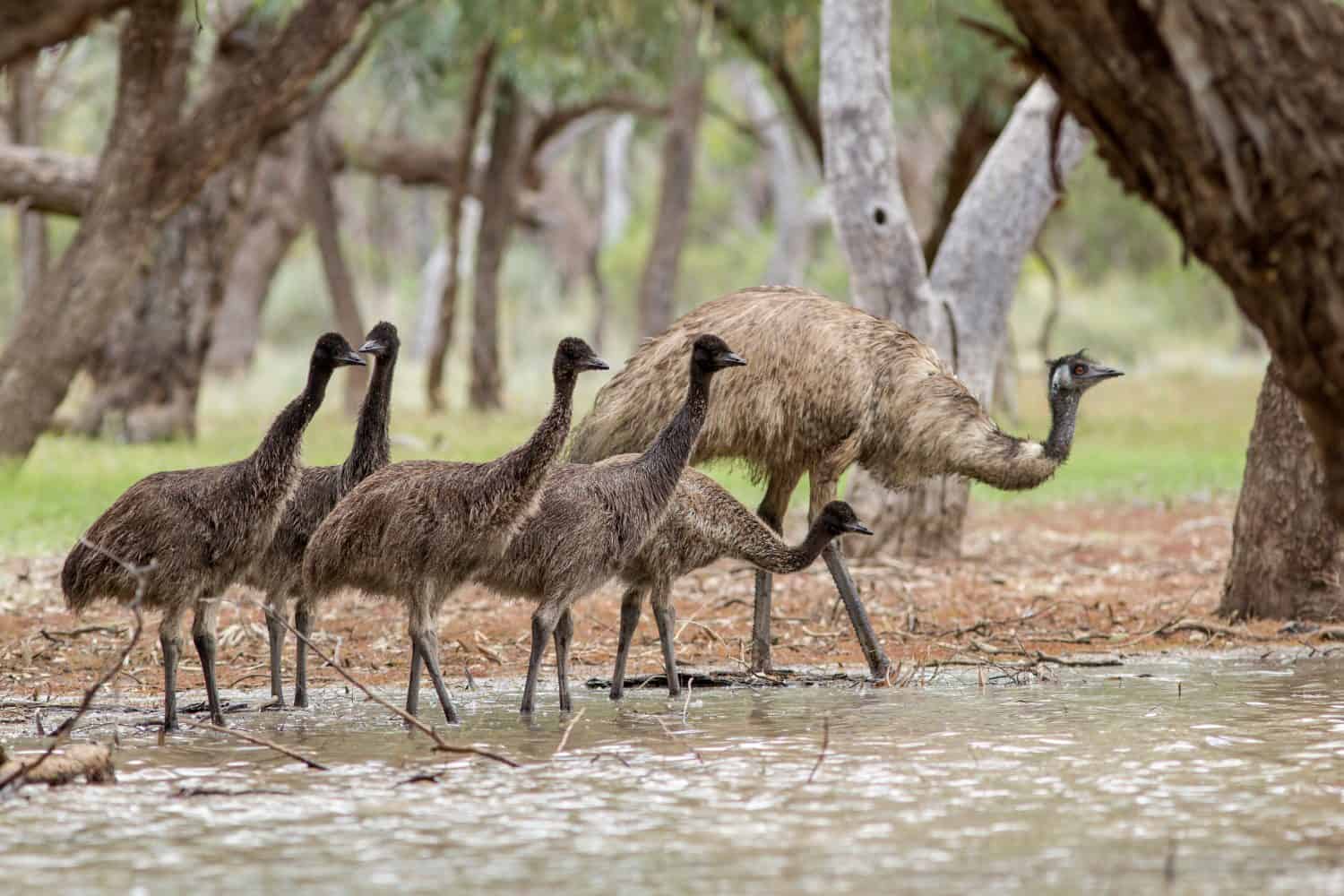
Juvenile baby emus have darker feathers than adults.
©Ken Griffiths/Shutterstock.com
Emus are incredible and unique birds that are endemic to Australia, which means that this is the only place in the entire world where they live in the wild! Today, these enormous birds mostly live on the mainland of Australia, commonly in woodlands, eucalyptus forests, desert shrublands, heathlands, and sand plains. They can also travel for hundreds of miles to find water or food.
10. Wild Baby Emus Once Lived in Tasmania

Emus make many unique noises, including drumming, booming, grunting, and hissing.
©nbiebach/Shutterstock.com
Although they are common in mainland Australia today, long ago baby emus also lived in Tasmania! In the 1860s, however, Europeans arrived and significantly changed the environment. Sadly, this led to the loss of Tasmania’s unique emu population.
While current populations of mainland emus are considered stable, they are still impacted by human activities and face many potential threats. For example, rapid human population growth forced them out of their previous habitats along the eastern coast. In addition, only around 40% of baby emus make it to adulthood. Moreover, droughts and wildfires, which are unfortunately becoming more frequent due to climate change, can have a significant impact on these magnificent birds as well.
The photo featured at the top of this post is © nbiebach/Shutterstock.com
Thank you for reading! Have some feedback for us? Contact the AZ Animals editorial team.







